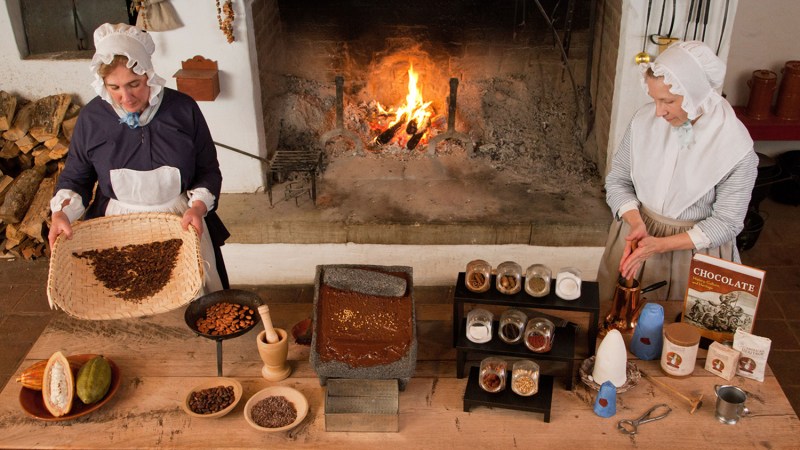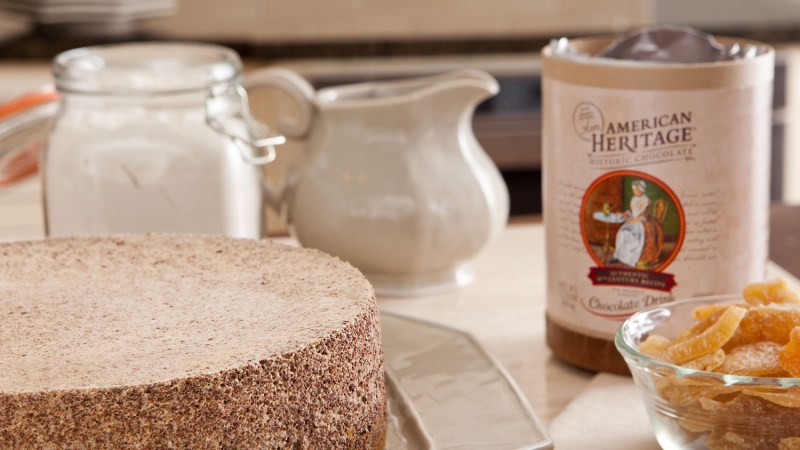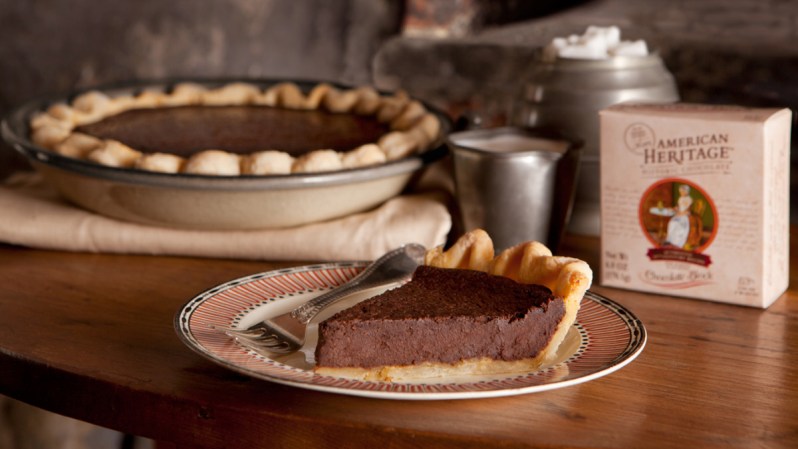Maybe you always thought history was a little dry; nothing but dates and long dead people. Not anymore. American Heritage Chocolate is making history sweet, spicy, and utterly delicious. They’ve recreated chocolate with a recipe from 1750 and only use ingredients available in the 1700s.
As it turns out, chocolate is like the Forrest Gump of foods, showing up at major moments in human history. But it has had a long journey to becoming the product we’d recognize today. Don’t worry, there’s no quiz at the end.
We can probably all agree Hernan Cortes, the 16th century Spanish conquistador, was a remarkably shitty guy: he was cruel, greedy, and overthrew the Aztec Empire. But he did bring cocoa beans back to Europe, for which we are eternally grateful. The Aztec prized cocoa so highly the seeds were used as currency: according to food historians, if you wanted a rabbit, you’d need to pony up 30 seeds. Cocoa also had deep religious meaning and a chocolate drink was made for nobles and warriors, though it’s nothing like the hot chocolate we have now. It would’ve been frothier, spicer, more bitter, and possibly with a healthy dose of blood, which most health departments now frown upon.
So, cocoa beans and Mesoamerican chocolate-making methodologies make their way to Spain in 1528 thanks to shitty Cortes. It’s a huge success and spreads throughout the continent as Spanish friars gift it as they travel around monasteries. If you showed up at Versailles in the 1660s you’d likely recognize their new aristocratic craze, hot chocolate.

Chocolate likely jumps back over to the Americas in 1621, which is the earliest recording we have of the stuff in the area. Though that comes from the inventory of a ship that sank off St. Augustine, Florida, so maybe it’s better to say we attempted to get chocolate to the American colonies in 1621. Regardless, a pub in Boston in the 1670s was selling imported, European-made chocolate. Fueled with that Protestant work ethic, just a few decades later, these Bostonians are importing beans and making chocolate themselves.
American colonists are just enjoying their increasingly-sweet-less-bitter-chocolate when, in the 1750s, the French and Indian War (or the Seven Years War if you’re in Europe) breaks out. Among other reasons, England felt France was getting a little uppity by moving into the Ohio River Valley, after all this was their turf. Seven years later, France lost and little does England know, in just a few years, the bitterness of this defeat will lead the French to aid the American colonists’ in their little rebellion. Despite this, the British owe chocolate a thank you note. During the French and Indian War, Benjamin Franklin kept a chocolatey-pep in the British step by personally supplying chocolate for the troops. A concept for military rations that would take hold in future wars…
Almost all of the Founding Fathers were such fans, it’s shocking the Declaration of Independence doesn’t read “…Life, Liberty, Chocolate, and the pursuit of Happiness.” George Washington ordered 20 pounds of chocolate to serve at breakfast when he had some guests staying at his Mount Vernon estate. Whatever the cooks created must’ve impressed because our first president made chocolate with warm cream a staple at his breakfast until his death. It’s a good thing he was so tall. Thomas Jefferson believed that the American zeal for hot chocolate would outstrip both coffee and tea. He might be technically right with all those mocha-coffee things at coffee chains.

Along with an elected government, the Founding Fathers passed down a love of chocolate to Americans. Meriwether, the Lewis half of Lewis and Clark, chomped on the stuff as he followed Sacagawea west to the Pacific. He ate it for his health, believing it had medicinal properties and, unlike his belief he would find herds of giant mammoths, he was pretty right. At least as far as dark chocolate goes.
In around the 1870s you’re starting to see chocolate we’d all easily recognize. Smooth, velvety, shiny stuff that Rodolphe Lindt made into chocolate we could eat. Chocolate showed up on the menu of the Titanic, Charles Lindbergh drank hot chocolate while piloting his famous Spirit of St. Louis, it was offered with pears on the Hindenburg, and M&M’s were sent up with the first space shuttle mission and included on every subsequent flight.
When you consider that cocoa made the jump from Mesoamerica to outer space in less than 500 years, it suddenly tastes a little more impressive.

American Heritage Chocolate allows you to savor a piece of chocolate’s incredible, world-changing history. They offer Kosher-certified all natural chocolate full of savory spices like cinnamon, nutmeg, vanilla, orange, anise, and red pepper. Get the chocolate block for baking or drinking (just eating chips of it). Chocolate Bites and Sticks are sweet and bitter, with a little hint of heat; the perfect little pick-me-up. The Chocolate Sticks also make great coffee stirrers… Order the powdered chocolate to make the Spiced and Iced chocolate drink, or use it in Thomas Jefferson’s personal hot chocolate recipe. Or, use their chocolate in the dozens of sweet and savory recipes they offer, like Sweet and Tangy Drumsticks, Chocolate Muhallabieh, Chocolate and Salted Peanut Cookies, or Chocolate Ricotta Pancakes, ice cream, and lavender brownies— the options are endless.
Your purchase also helps fund education with the company’s historical partners. These chocolates are only sold at museums and living history sites (as well as its site) so that the money can go to those institutions. At different locations around the country, like Captain Jackson’s Historic Chocolate Shop in Boston, you can watch demonstrations and get hands-on as you learn about chocolate’s role in American history. Story is, they’re working on recipes for new historical periods!
American Heritage Chocolate, like history itself, is rich, complex, nuanced, and unlike anything you’d taste now.
American Heritage Chocolate opens a tempting, delicious window into history.


